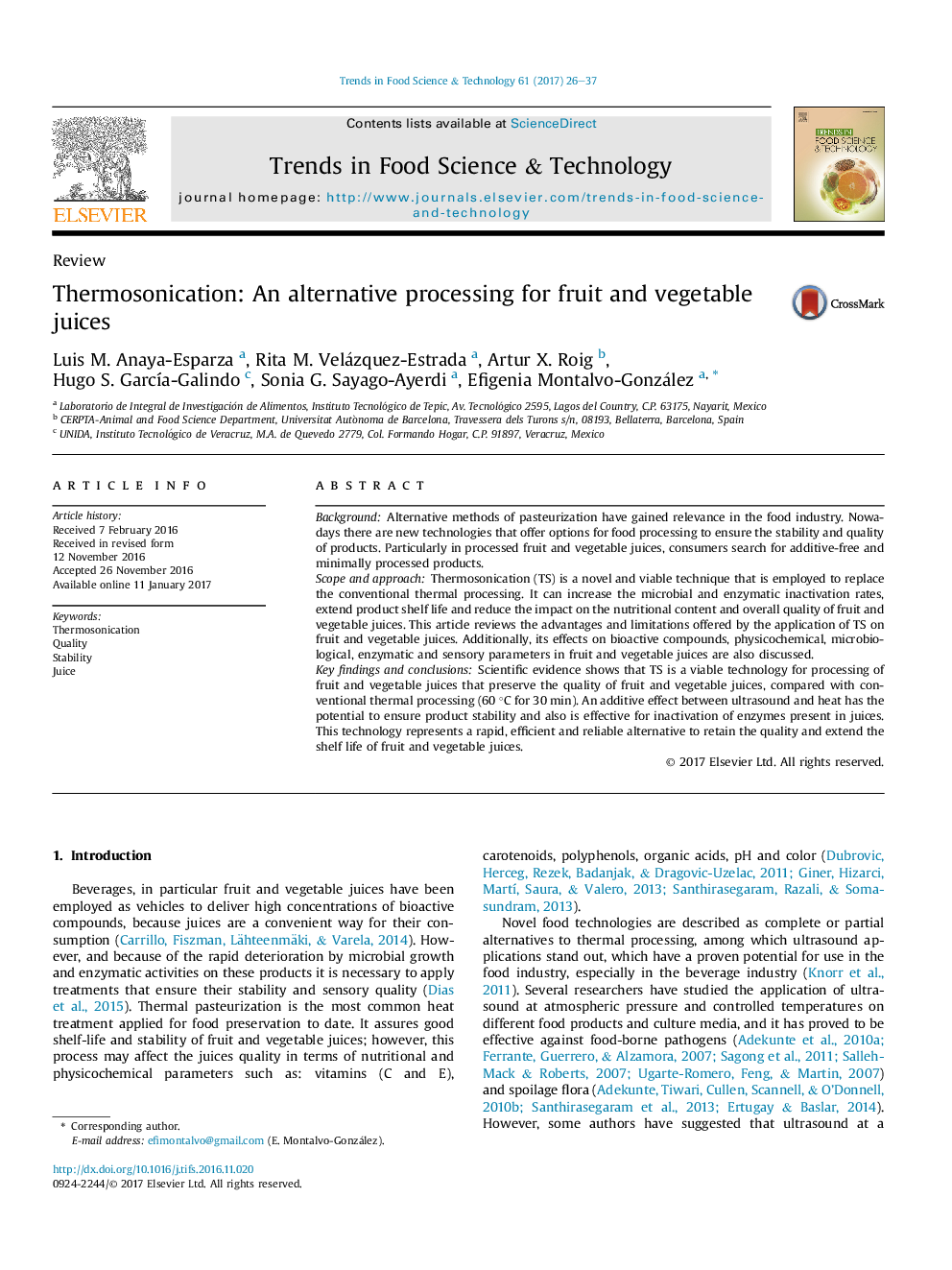| Article ID | Journal | Published Year | Pages | File Type |
|---|---|---|---|---|
| 5523723 | Trends in Food Science & Technology | 2017 | 12 Pages |
â¢Physical principles of thermosonication (TS) are discussed.â¢Mechanisms of microbial and enzyme inactivation for TS in juices are suggested.â¢TS plays a key role in stability of bioactive compounds and quality of juices.â¢TS has potential for keeping sensory properties and improve shelf-life of juices.
BackgroundAlternative methods of pasteurization have gained relevance in the food industry. Nowadays there are new technologies that offer options for food processing to ensure the stability and quality of products. Particularly in processed fruit and vegetable juices, consumers search for additive-free and minimally processed products.Scope and approachThermosonication (TS) is a novel and viable technique that is employed to replace the conventional thermal processing. It can increase the microbial and enzymatic inactivation rates, extend product shelf life and reduce the impact on the nutritional content and overall quality of fruit and vegetable juices. This article reviews the advantages and limitations offered by the application of TS on fruit and vegetable juices. Additionally, its effects on bioactive compounds, physicochemical, microbiological, enzymatic and sensory parameters in fruit and vegetable juices are also discussed.Key findings and conclusionsScientific evidence shows that TS is a viable technology for processing of fruit and vegetable juices that preserve the quality of fruit and vegetable juices, compared with conventional thermal processing (60 °C for 30 min). An additive effect between ultrasound and heat has the potential to ensure product stability and also is effective for inactivation of enzymes present in juices. This technology represents a rapid, efficient and reliable alternative to retain the quality and extend the shelf life of fruit and vegetable juices.
